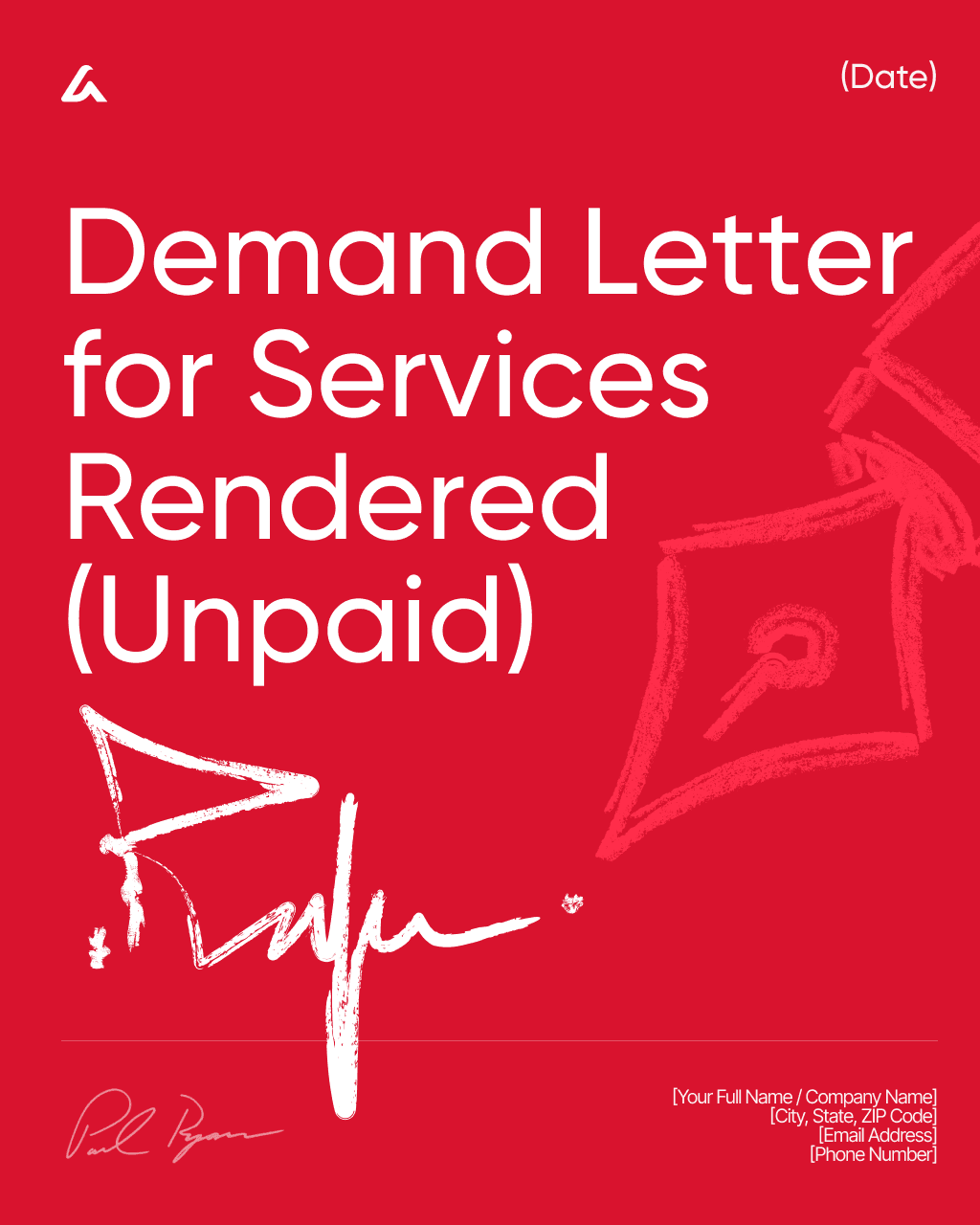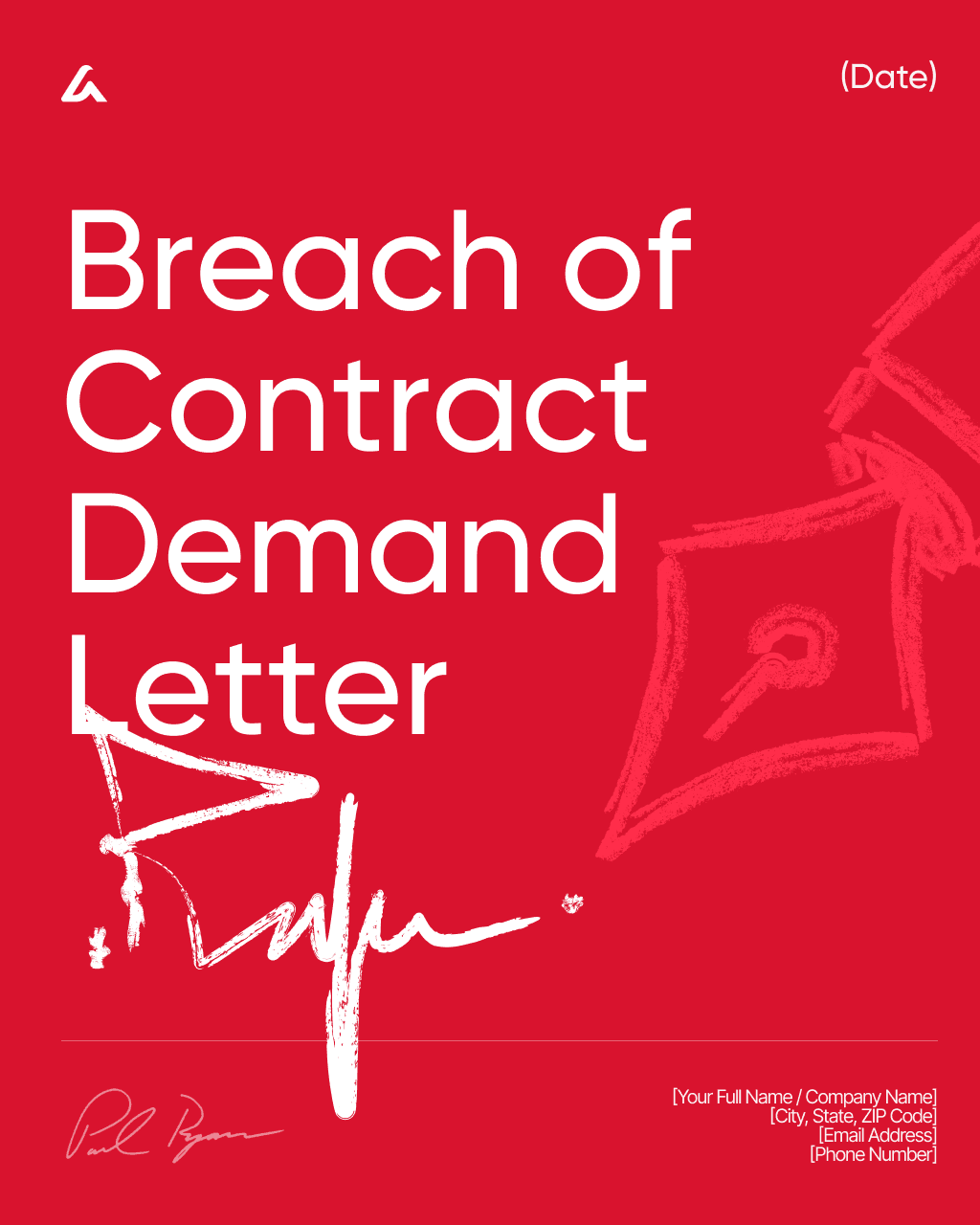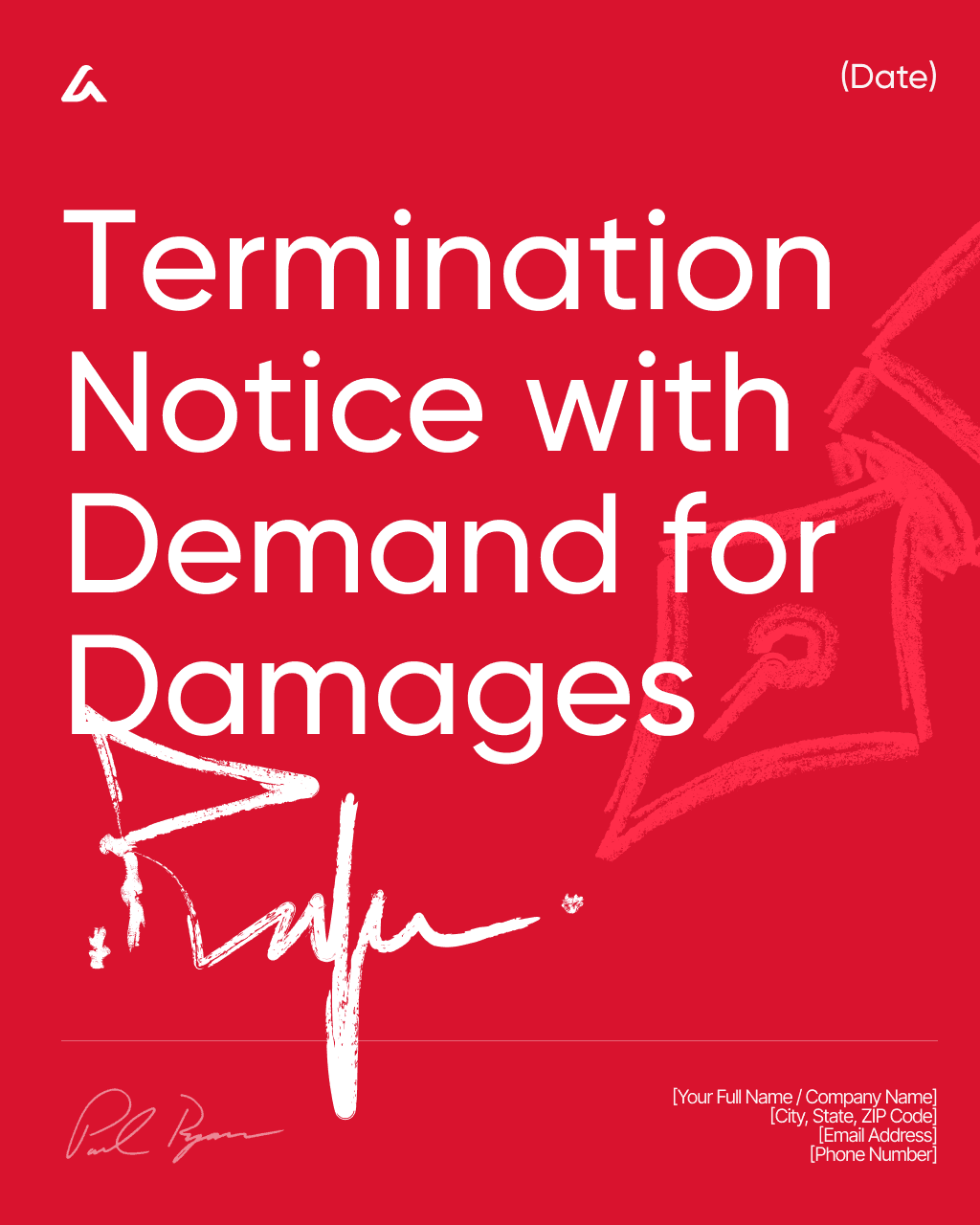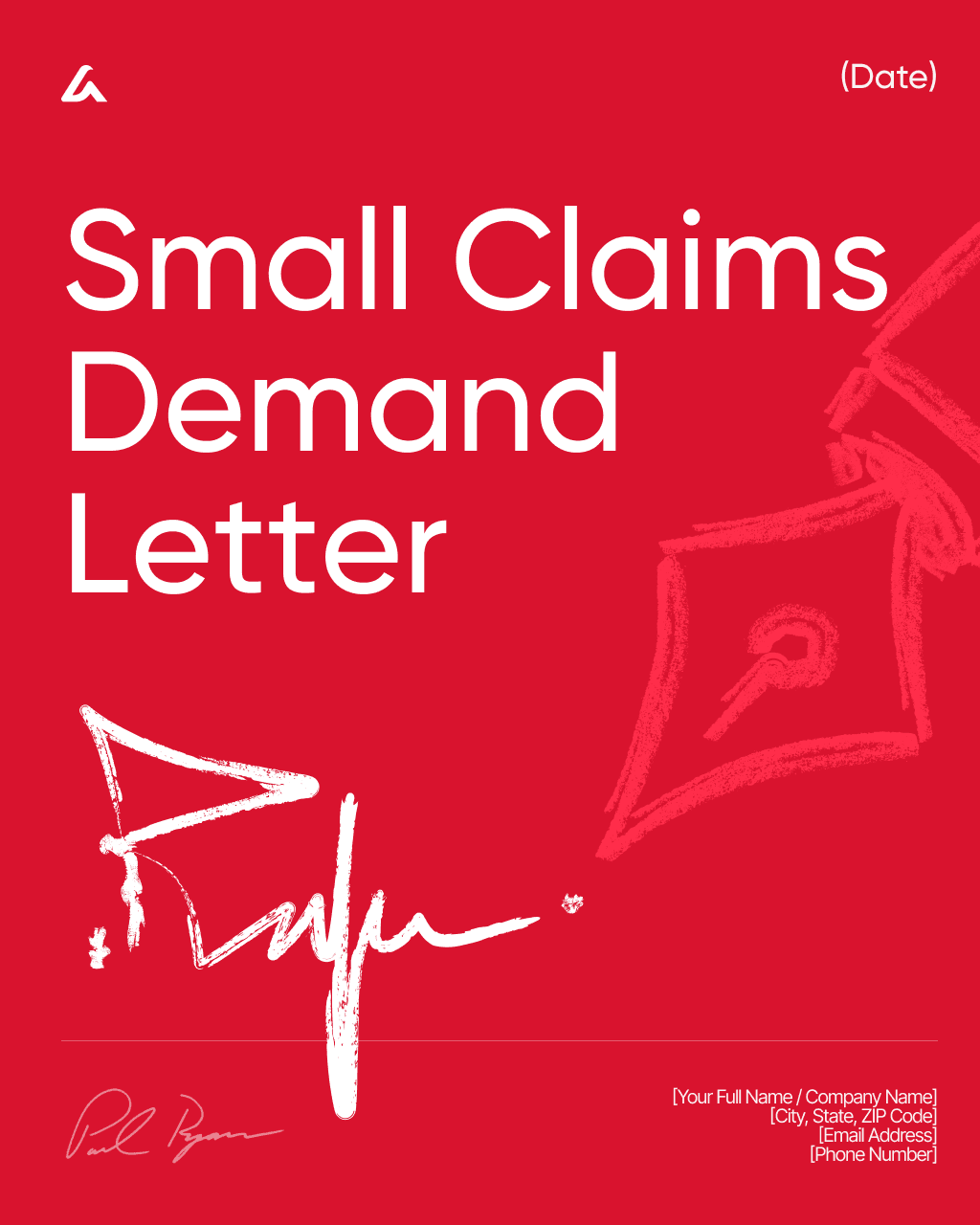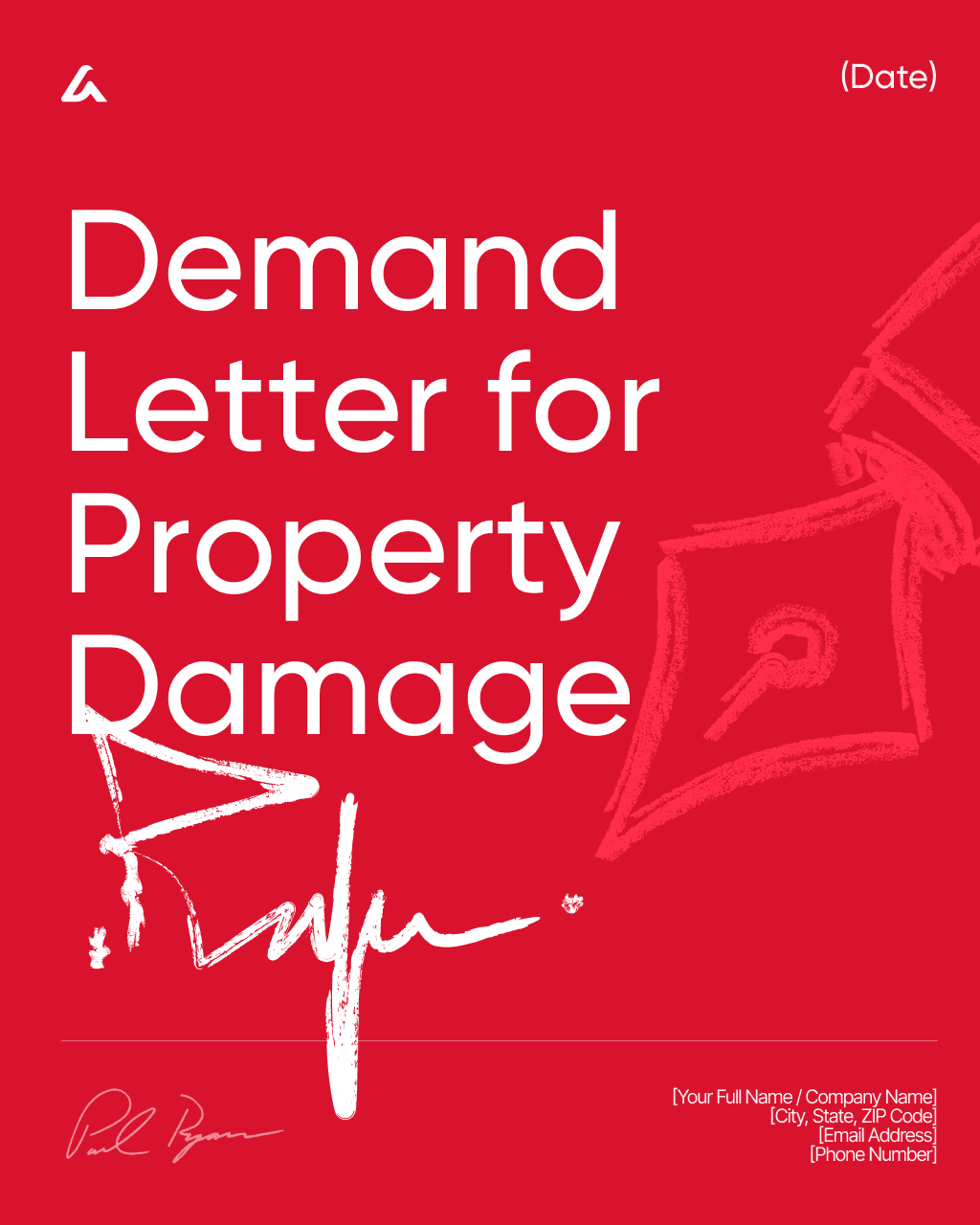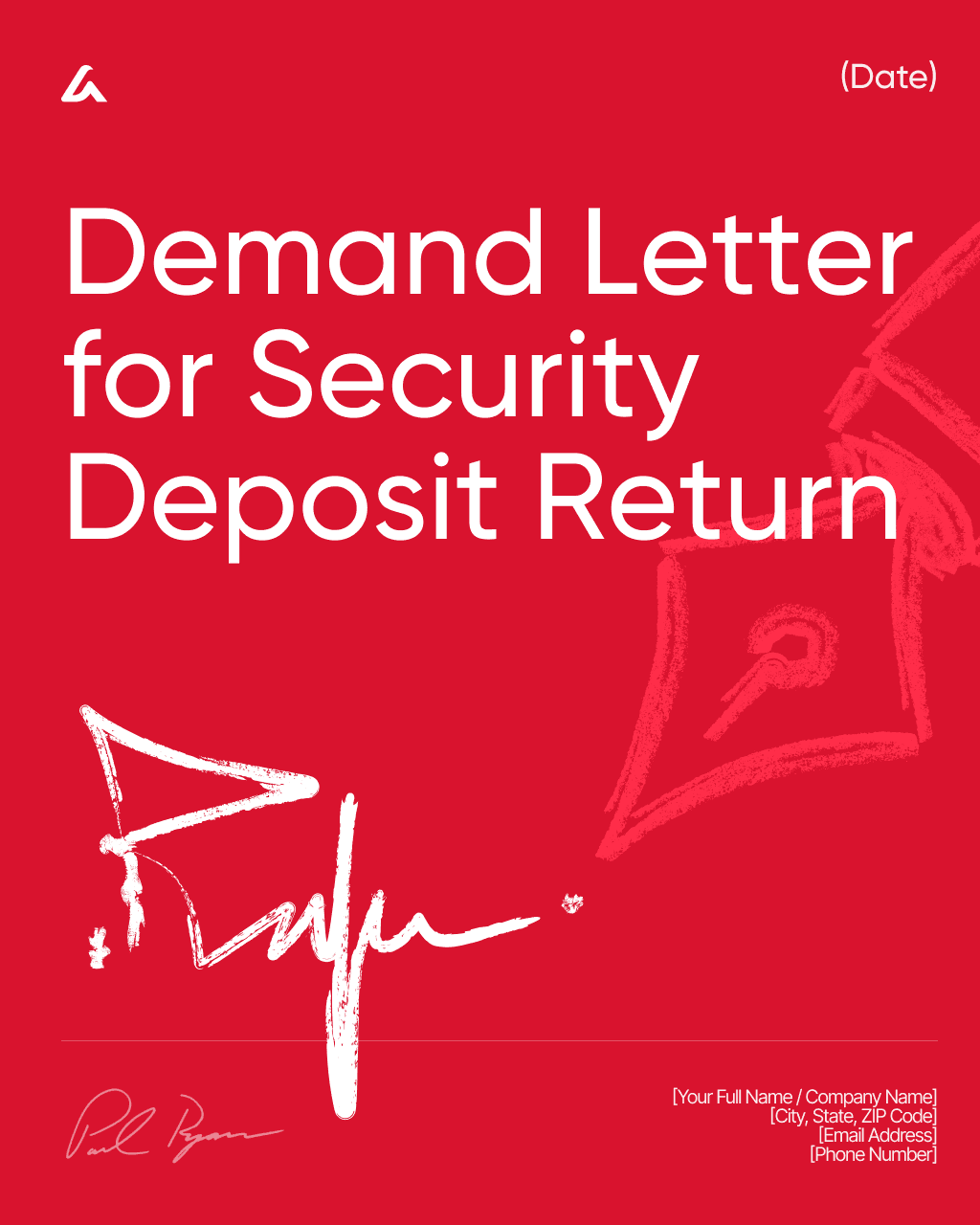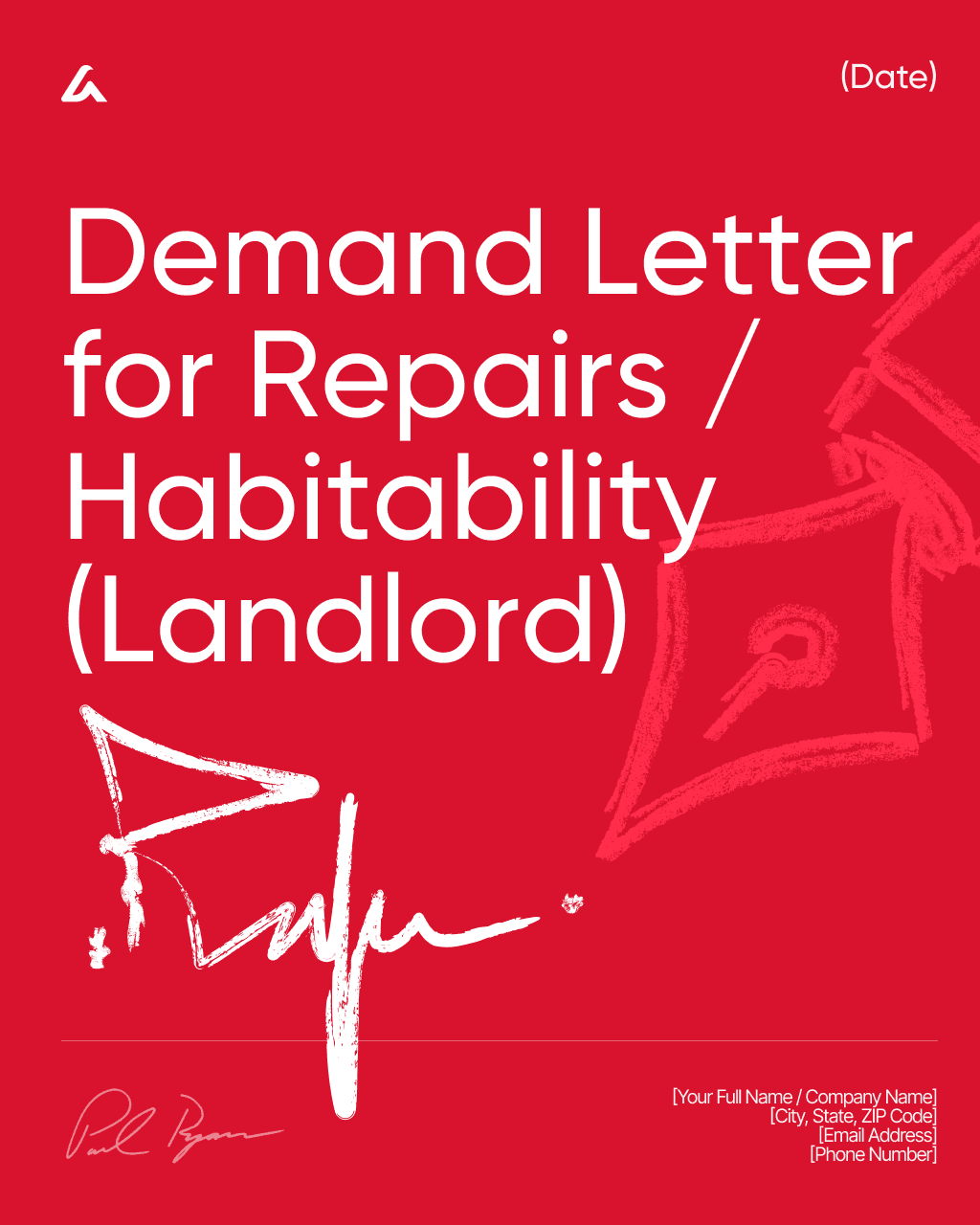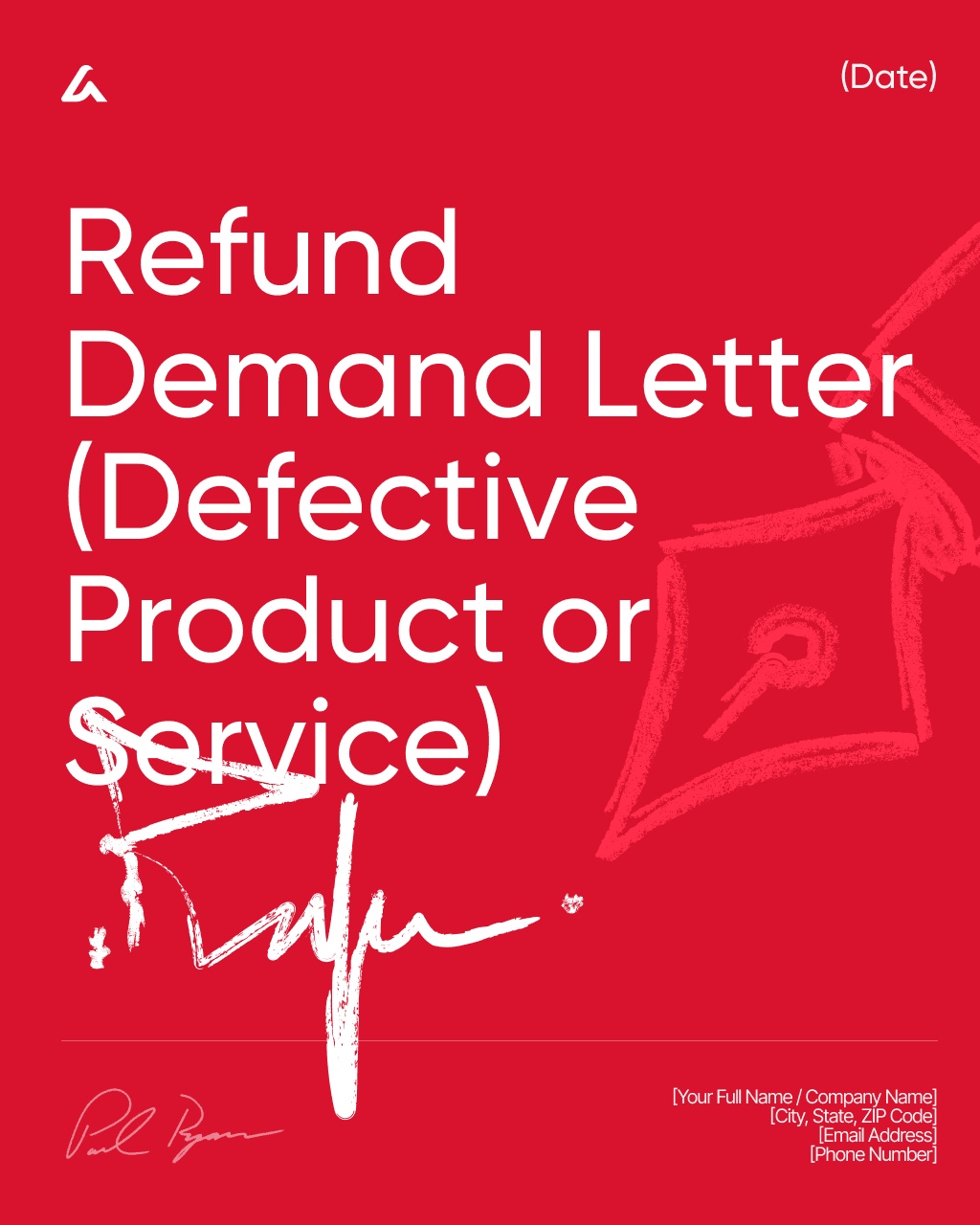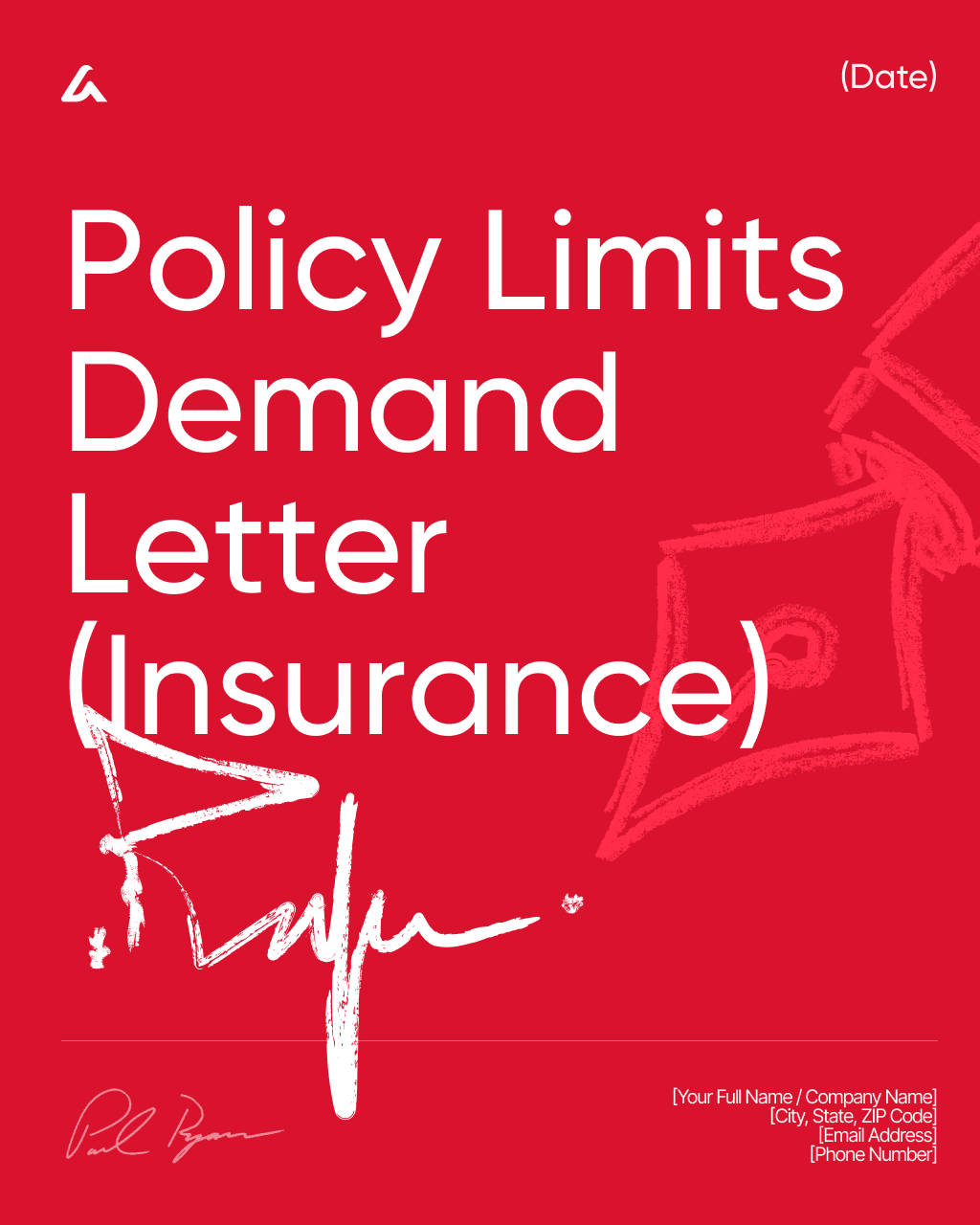Free template
Cease and Desist Letter Template – Florida
Stop unauthorized activities effectively with this professional Florida Cease and Desist Letter Template.
Downloaded 2586 times
Download template
Cease and Desist Letter
This Cease and Desist Letter ("Letter") is issued on [Date] by:
Sender: [Full Name / Company Name]
Address: [Address]
Phone/Email: [Contact Details]
To:
Recipient: [Full Name / Company Name]
Address: [Address]
Phone/Email: [Contact Details]
Scope of Harm and Safety Concerns
This Letter addresses harassment, unwanted communications, or online targeting within Florida. Such actions pose safety and reputational risks and must stop immediately.
Immediate Cessation; Takedown and De‑Index Requests
Cease the Conduct now. Within [X] days, remove content and, where feasible, request de‑indexing from search engines. Provide a list of URLs and confirmations of removal.
No‑Contact and Proximity Instructions
Do not contact us other than via written compliance updates, and do not appear at our offices or homes. Any surveillance or repeated messages will be treated as ongoing misconduct.
Business Interference and False Claims
Stop actions that interfere with clients, vendors, or partners, including false statements or impersonation. Provide written assurance that such conduct will not recur.
Brand Assets and Images
Immediately stop using our images, logos, or likeness without permission and delete all copies. Confirm steps taken to prevent future misuse, including requests made to third parties.
Evidence Preservation and Delivery
Preserve relevant communications and files. We will maintain proof of service and expect written confirmation of your compliance within [X] days.
Reservation of Rights and Jurisdiction
All rights are reserved, including injunctive relief and damages. This Letter concerns Florida activity and is issued without prejudice.
Sincerely,
[Sender Name]
[Title]
[Company]
[Address]
[Email]
Acknowledged by Recipient (optional):
[Recipient Name]
[Date]
Flash deal
Flash deal
Today
Today
No time to fill it up? Generate your custom agreement with AI Lawyer in seconds
What’s Included
Legal Research
Legal Research
Legal Research
Contract Drafting
Contract Drafting
Contract Drafting
Document Review
Document Review
Document Review
Risk Analytics
Risk Analytics
Risk Analytics
Citation Verification
Citation Verification
Citation Verification
Easy-to-understand jargon
Easy-to-understand jargon
Easy-to-understand jargon
Details
Learn more about
Cease and Desist Letter Template – Florida
Click below for detailed info on the template.
For quick answers, scroll below to see the FAQ.
Click below for detailed info on the template.
For quick answers, scroll below to see the FAQ.
Florida Cease and Desist Letter FAQ
What is a Cease and Desist Letter?
A Cease and Desist Letter is a formal written notice that demands an individual or organization immediately stop a specific harmful, unlawful, or unwanted activity. It clearly identifies the behavior that must end, explains why the conduct is improper or damaging, and warns of possible legal action if the behavior continues. While a Cease and Desist Letter is not a court order, it is often a powerful first step toward resolving the issue without going to court.
This letter is commonly used for harassment, defamation or slander, copyright or trademark infringement, contract breaches, unfair business practices, or other forms of misconduct. A well-drafted Cease and Desist Letter helps protect your rights, creates a written record of your request, and shows that you made a good-faith effort to resolve the matter. In many cases, receiving this letter is enough to make the other party stop the behavior to avoid further consequences.
When to use a Cease and Desist Letter?
A Cease and Desist Letter is used when someone’s actions are violating your rights, causing harm, or continuing unwanted behavior despite prior requests to stop. It’s appropriate when the issue is ongoing and you need a formal, written demand that the person or business immediately stop the wrongful conduct before you consider legal action. This letter is often sent for harassment, defamation, copyright or trademark infringement, contract or confidentiality breaches, or unfair business practices that damage your reputation, property, or peace of mind.
It’s especially useful when informal conversations or warnings haven’t worked and you need to show you’re serious about enforcing your rights. A Cease and Desist Letter creates a clear record of your attempt to resolve the issue and often prompts the other party to comply to avoid further consequences.
What should be included in a Cease and Desist Letter?
A Cease and Desist Letter should clearly explain the misconduct, assert your legal rights, and outline the steps the recipient must take to stop the harmful activity. To make it effective and professional, include the following key elements:
Contact Information: List the full name, address, and contact details of both the sender and the recipient. If an attorney is involved, include their contact information as well.
Date: State the date the letter is written or sent.
Description of the Harmful or Infringing Activity: Provide a clear explanation of the behavior you are addressing, with specific details, examples, or dates. If the behavior has caused damage or harm, briefly mention it.
Statement of Rights: Identify the legal rights being violated — for example, copyrights, trademarks, privacy rights, defamation, or harassment protection.
Demand to Cease: Clearly and firmly state that the offending activity must stop. Outline specific actions the recipient must take to comply.
Legal Consequences: Warn that failure to comply may result in legal action, such as a lawsuit or a formal cease and desist order. If you are working with an attorney, they may tailor the appropriate level of warning language.
Deadline for Compliance: Provide a reasonable deadline for the recipient to stop the behavior and confirm compliance.
Evidence: Attach or reference any supporting evidence (e.g., screenshots, photos, contracts, messages) that supports your claims.
Signature: The sender — or their attorney — should sign the letter to validate it.
Optional Disclaimer: You may include a brief statement noting that the letter is not legal advice and is intended to request voluntary compliance.
Delivery Confirmation: If mailed, consider sending the letter by certified mail with return receipt or another trackable method to ensure proof of delivery.
What should I do if I don’t receive a response to a Cease and Desist Letter?
If the recipient doesn’t respond to a Cease and Desist Letter, don’t panic — this is not unusual. The steps you take next depend on the severity of the issue and how far you’re willing to enforce your rights.
First, allow a reasonable amount of time to pass beyond the deadline, as the recipient may be reviewing the letter or seeking legal advice. If there is still no response, consider sending a follow-up letter or final notice, clearly reminding them of your original demands and the consequences of ignoring the letter.
If the behavior continues or the letter is completely ignored, you may need to escalate the matter. This can include having an attorney send a more formal legal notice, pursuing a court-issued cease and desist order, or filing a lawsuit where appropriate. During this period, make sure to collect and preserve all evidence of the ongoing issue, as it strengthens your position if legal action becomes necessary.
What’s the difference between a Cease and Desist Letter and a Demand Letter?
A Cease and Desist Letter and a Demand Letter are both formal written notices, but they serve different purposes.
A Cease and Desist Letter is used to order someone to stop a specific harmful, illegal, or infringing behavior — such as harassment, defamation, copyright or trademark infringement, or breach of privacy. Its focus is on immediately stopping the behavior. It may also warn of legal action if the conduct continues, but it does not typically ask for money or compensation.
A Demand Letter, however, is used to request payment, compensation, or action to resolve a dispute. It usually outlines what the recipient owes or must do, explains the consequences of non-payment or non-compliance, and often includes a deadline to settle the matter before legal action is taken.
In short:
A Cease and Desist Letter tells someone to stop doing something, while a Demand Letter tells someone to take action or pay to fix an issue.
Similar templates
Other templates from
Letters and Notices Templates
Money back guarantee
Free trial
Cancel anytime
AI Lawyer protects
your rights and wallet
Money back guarantee
Free trial
Cancel anytime
AI Lawyer protects
your rights and wallet
Money back guarantee
Free trial
Cancel anytime
AI Lawyer protects
your rights and wallet
Money back guarantee
Free trial
Cancel anytime



























































































































